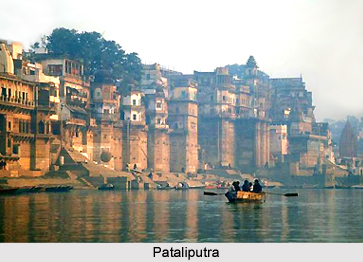 History of Patna District goes back to the earliest period of civilization. The original name of Patna was Pataliputra or Patalipattan and its history makes a start from 600 century BC. Patna covers an area of 42 sq km.
History of Patna District goes back to the earliest period of civilization. The original name of Patna was Pataliputra or Patalipattan and its history makes a start from 600 century BC. Patna covers an area of 42 sq km.
The name Patna has undergone many changes at its earliest stages like Pataligram, Kusumpur, Patliputra, Azimabad, etc. Chandragupta Maurya made it his capital in the 4th century AD. Thereafter the city lost its importance until Sherkhan Suri rose into power in the early 16th century A.D. Another version of history of Patna District that comes to focus is that there existed a village named Pattan or Patthan, which later turned into Patna. It has been said that Pataliputra was founded by Ajatashatru. The ancient village was named `Patali` and the word `Pattan` was added to it. Greek history mentions `Palibothra` which perhaps is Pataliputra itself.
History of Patna District further states that Ajatashatru had to adopt certain security measures in order to protect Patna from the repeated invasions of Lichchavi Tribe. He had got a natural riverine fort protected by three rivers. Ajatashatru`s son had moved his capital from Rajagriha to Pataliputra and this status was maintained during the reign of the Maurya Empire and the Gupta Empire. Ashoka administered his empire from here. Chandragupta Maurya and Samudragupta made Pataliputra as their capital. It was from here Chandragupta sent forth his army to fight the Greeks of the western frontier and Chandragupta Vikramaditya repelled the Sakas and the Huns from here. It was there that Greek ambassador Megasthenes stayed during the reign of Chandragupta Maurya. Further, many noted scholars like Kautilya stayed here and works like `Arthashastra` were written from this place. According to history, this city was considered as the fountainhead of the spring of knowledge and wisdom in ancient times.
According to the history of Patna District, Prince Azim-us-Shan, grandson of Aurangzeb, became the Governor of Patna in the year 1703. It was Azim-us-Shan who tried to turn Patna into a beautiful city and gave it the name `Azimabad`. The common people however went on calling it `Patna`. Modern Patna City had at one time a wall all round, the remains of which can still be seen at the entrance of old Patna.



















